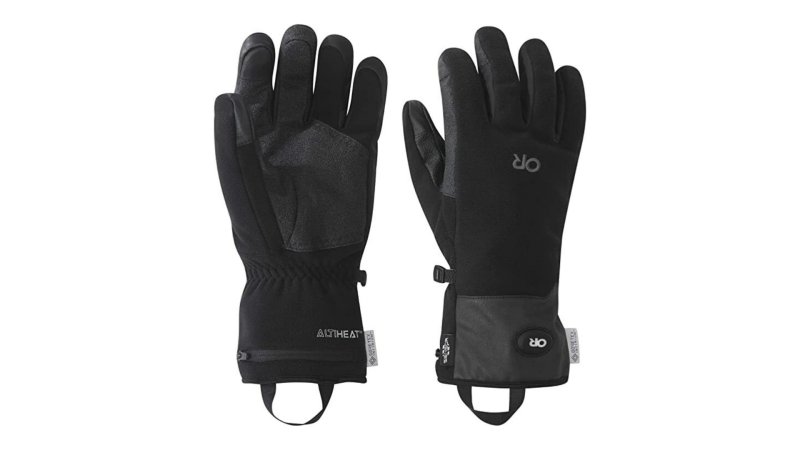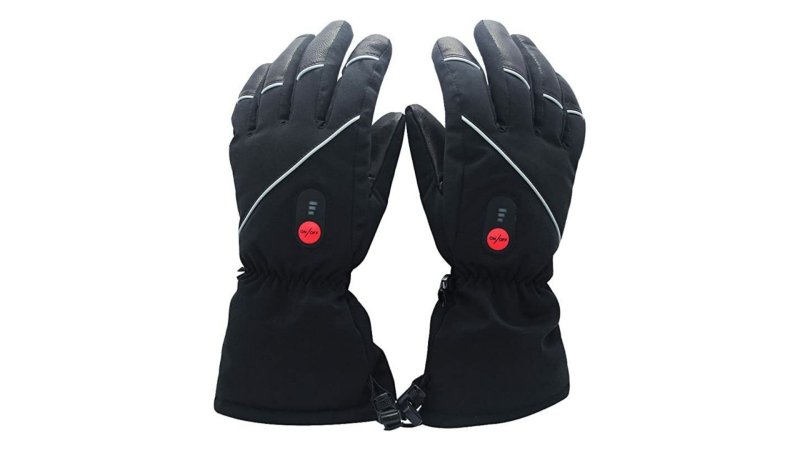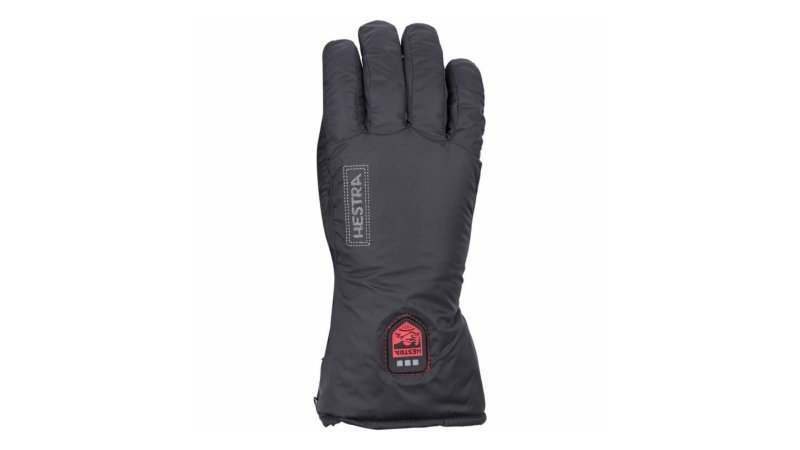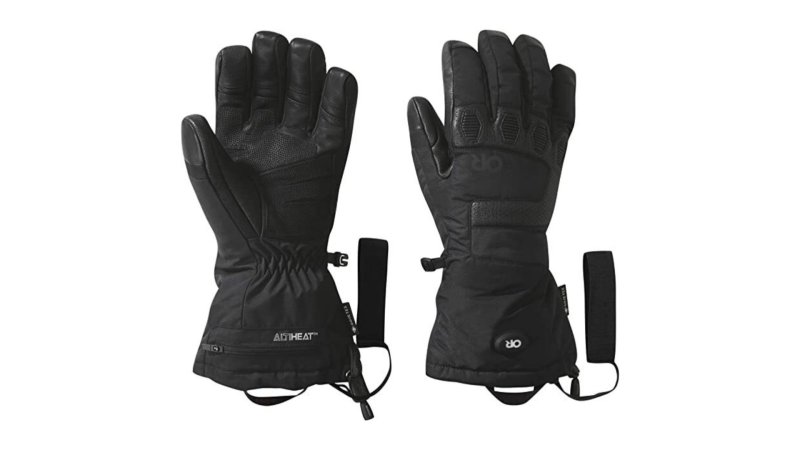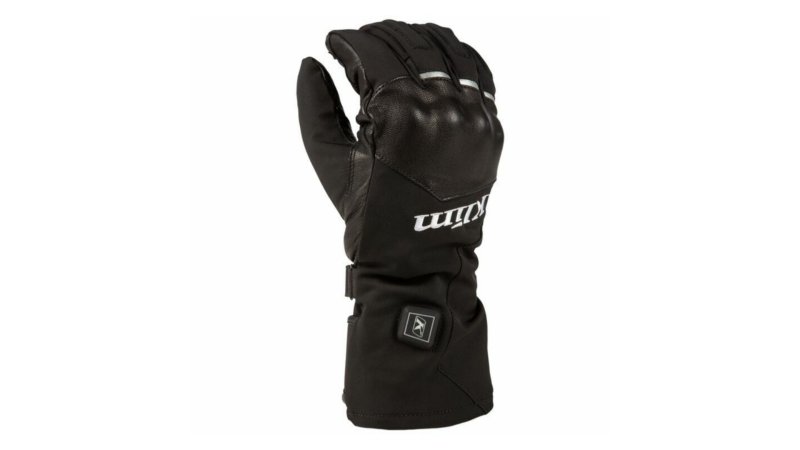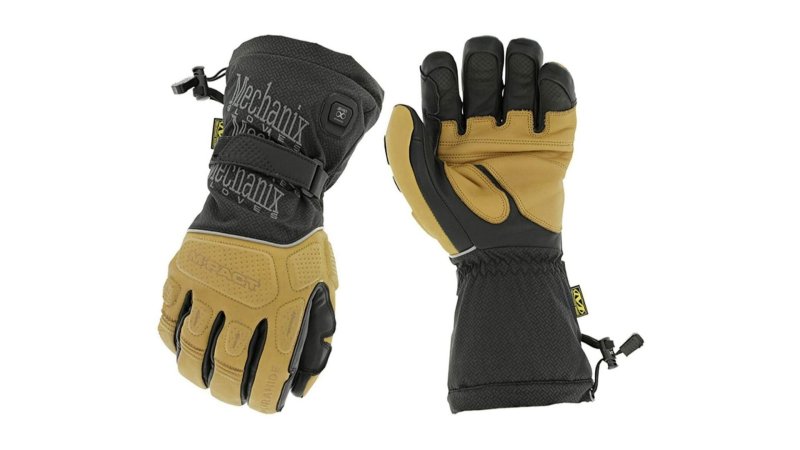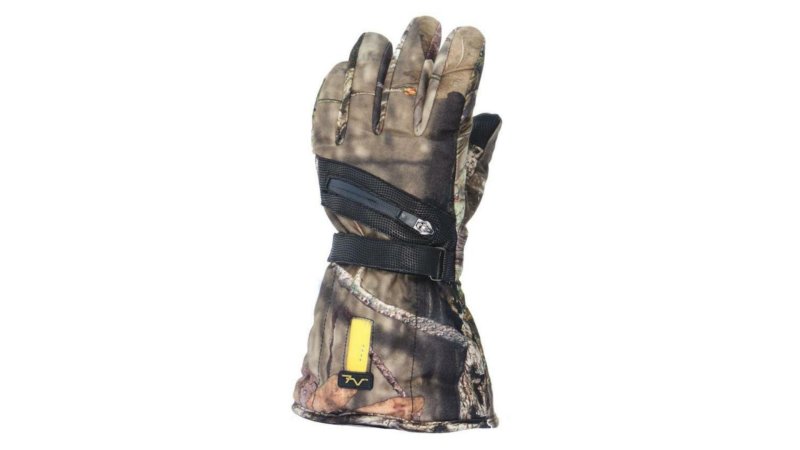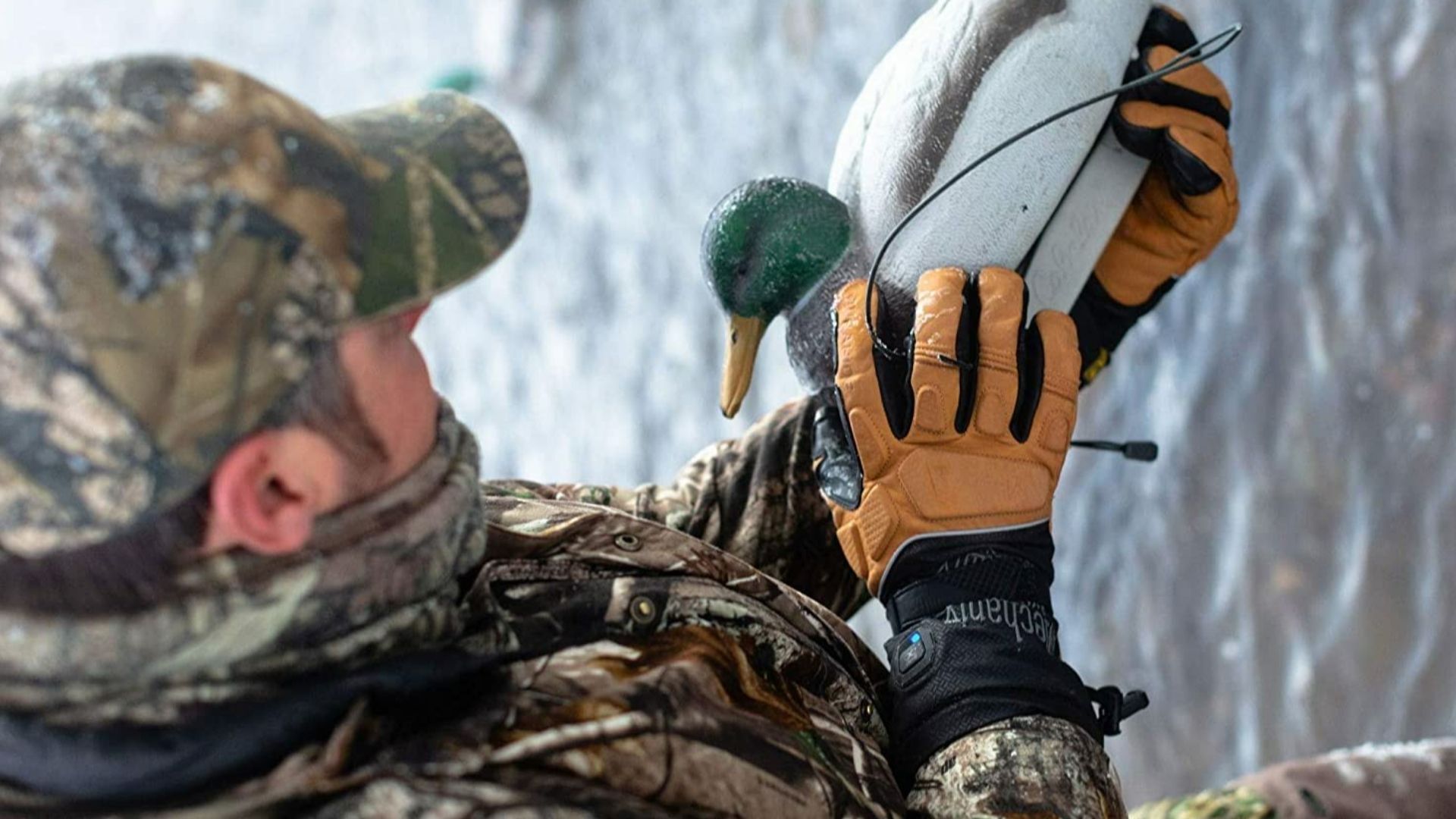

We may earn revenue from the products available on this page and participate in affiliate programs.
If you haven’t used heated gloves before, you’re in for a real treat. Say goodbye to frozen limbs and chills that prevent you from doing even the simplest tasks.
During my time in the Marine Corps, I once had a company commander who was just sure that our issued cold-weather gear would instantly transform us into helpless babies. He seemed convinced that just having a beanie in your pack would make the rounds fall out of your magazine and turn into the Taliban’s favorite flavor of jelly beans. If he found out about gloves that not only insulate hands from the cold but actively keep them warm, he’d probably have a seizure.
Luckily, none of us are subject to such rules on our own time. If you’d like to put modern technology to work for you and stop watching your fingers turn into icicles, you’re in the right place. Let’s find the perfect pair of heated gloves for you.
Best Overall
Outdoor Research Gripper
Pros
- Textured palm provides excellent grip
- Index finger and thumb are touchscreen-compatible
- Provides above-average wind protection
- Suitable for day-to-day use
Cons
- Not cut out for winter sports
- Inside-cuff gloves allow snow in sleeves
- Warm, but not necessarily hot
Product Specs
Best Value
Savior Heated Gloves
Pros
- Huge selection of sizes to choose from
- Reflective strips increase visibility in low-light situations
- Protected by a waterproof membrane
- Gauntlet goes over sleeves to keep snow out
Cons
- Be careful to not turn the power on accidentally
- Does the power level light need to be so bright?
- Long-term durability remains to be seen
Product Specs
Editor’s Pick
Hestra Heated Liner
Pros
- Enhance your existing winter wardrobe with heated liners
- Build quality is as good as it gets
- Recharge the battery packs via USB anywhere
- Backed by a limited lifetime warranty
Cons
- Not meant to be worn without an outer layer
- Can be a chore to reach the power button
- Price is as steep as the ski slopes
Product Specs
Best Heated Ski Gloves
Outdoor Research Lucent
Pros
- Waterproof, windproof, and borderline cold-proof
- Upgraded exterior is even more durable
- Touchscreen-compatible thumb and index finger
- Covered by the Outdoor Research Infinite Guarantee
Cons
- Priced several times higher than conventional premium ski gloves
- Heater interferes with avalanche beacons
- Noticeably bulky compared to the other gloves here
Product Specs
Best Heated Motorcycle Gloves
Klim Hardanger HTD
Pros
- CE Level I armor on the knuckles
- Goat leather protects the palms and fingers
- Hours of warmth available from three heat settings
- Gauntlet keeps rain out of your sleeves
Cons
- Heated grips go a long way with uninsulated palms
- We hope you like black gloves
- Small sizes can be hard to find
Product Specs
Best Heated Work Gloves
Mechanix ColdWork M-Pact
Pros
- Control heat with the Clim8 app
- Protect your hands with leather and impact-absorbing panels
- Waterproof layer keeps hands dry
- Sensor monitors skin temperature to avoid overheating
Cons
- One of the more expensive work gloves out there
- Leather palms aren’t the most grippy
- Is the app a benefit or a nuisance to you?
Product Specs
Best Heated Hunting Gloves
Volt Camo 7V
Pros
- Heating element extends to the fingertips
- Fleece exterior is silent
- Camouflage pattern outsourced to Mossy Oak
- Waterproof and breathable to stay dry
Cons
- Too bulky for the most precise tasks
- Better keep the light-up power level indicator covered
- Good hunting gear isn’t cheap
Product Specs
Why you should trust us
Residents of the frigid north are no strangers to cold temperatures. I don’t get cold very easily, and even I get pretty miserable when my fingers go numb. I’ve also seen how uncomfortable conditions like Reynaud’s and chilblains can be. That kind of thing is no fun and you shouldn’t have to endure it if you don’t have to. We’ve pulled together some of the best snow boots for men and women, so we’re no strangers to finding the best winter gear.
Types of heated gloves
You wouldn’t wear gardening gloves to shred the gnar at your local ski area and you wouldn’t try to drive to work wearing mittens fit for an arctic exploration mission. The same goes for heated gloves; you need to pick the right gear for the job. Don’t worry, it isn’t complicated and we did the homework for you.
All-purpose heated gloves
Why are you shopping for heated gloves in the first place? If your reasoning is that your hands are always cold, you need a glove that’s comfortable doing everyday tasks like driving to work and running errands. Rugged, waterproof shells are nice to have but not necessary. You also don’t need tons of insulation and a long-lasting battery.
The good news is that there are plenty of heated gloves that will do what you need them to do for a reasonable price. We found some great options for everyday use that barely crack the $100 barrier. In the world of heated gloves, that’s pretty good.
Specialized heated gloves
If you have more specific plans for your heated gloves, you’ll need to pick something that’s up to the challenge. We found a few options that are great for skiing and snowboarding, hunting, and riding motorcycles. All of these provide capabilities beyond what basic heated gloves can offer.
These specialized gloves are designed with a specific activity in mind. Hunting gear needs to be camouflaged. Motorcycle gloves can’t interfere with feeling the bike’s controls. Winter sports require gloves that minimize hot chocolate breaks in the lodge. In any case, there’s probably something out there for you if you know where to look.
Heated liners
Heated liners are ideal for people who plan on doing a lot of different things with their heated gloves. Liners slip into other gloves, mittens, or shells to make your battery-powered warmth more versatile. We found a great option from Hestra that you’ll want to take everywhere you go.
The downside of heated liners is that they aren’t meant to be worn alone. They offer little to no protection against water and wind, and they might even be damaged if you get them wet. You could probably get away with wearing them in the car or around town when the weather is cooperative, but most of the time you’ll need to pair them with an appropriate shell.
Key features of heated gloves
Battery life
All that heat has to come from somewhere, right? The type of battery used in a pair of gloves will determine how much heat they can create and how long they can sustain it. Just how long a given battery will last can be tricky to determine because there are multiple factors at play, like ambient temperature, battery capacity, and electrical draw created by the heating element.
Batteries are often described in terms of milliamp hours. More milliamp hours translates to more energy being stored in the battery, so a higher number should correlate with longer battery life, right? Not necessarily––remember that energy is drawn from batteries at different rates. If one battery has twice as much power as another but uses it twice as fast, their battery life will be roughly the same.
Heat settings
Some heated gloves are either on or off––you get maximum heat or no heat at all. Others will allow you to choose a heat setting that generates just the right amount of heat. This is a great way to match your environment and conserve energy.
Most of the time, all functions will be controlled by a single button on each glove. That button will turn the heating element on, cycle through the power levels, and turn it off. Some include a visible meter that indicates which power level you’re currently using. That draws some electricity from the battery, but it can be a nice feature that saves you some guesswork.
Shell construction
Heated gloves can be a big step up from traditional gloves, but they’re still subject to the laws of nature. If they absorb water, your hands are going to freeze quicker than if they were in the open air. If they don’t breathe well, your hands will sweat and eventually get cold, in addition to making your gloves smell like old gym socks.
Quality heated gloves have to be quality gloves first. Look for liners that wick away moisture and shells that keep water and wind outside where they belong. Insulation doesn’t need to be as thick as it would in a conventional glove, but it should be enough to keep heat from escaping and being wasted.
Benefits of heated gloves
Comfort
It should go without saying that comfort is the biggest motivator for people who buy heated gloves. Feeling your fingers slowly go numb is no fun, and neither is the burning sensation when they finally thaw out. Heated gloves are a great way to keep them warm when they don’t generate enough of their own heat to warm traditional gloves.
Temperature isn’t the only factor, though. We considered the materials used to make various heated gloves. If water soaks into a glove, you might as well take it off and go without. If the inner material is scratchy and rubs you the wrong way with poorly placed seams, it doesn’t matter how warm you are––you’re still going to be uncomfortable.
Improved dexterity
Numb fingers aren’t just painful, they’re borderline useless when it comes to doing things that require dexterity. Staying warm is the first step toward maintaining full use of your hands and fingers when the temperature plummets.
Most cold-weather gloves are bulky and make it difficult to use fine motor skills. Have you ever tried to fish keys out of your pocket with ski gloves on? It’s not easy. Heated gloves can keep you warm with less material getting in the way. They’re also arguably safer to drive in since there’s less physical interference between your hands and the steering wheel.
Safety
None of us try to be unsafe (hopefully), but sometimes it happens. Maybe your teeth are chattering while you wait for your car to warm up and decide to hit the road before the heater has a chance to do its thing. Good luck keeping a grip on the wheel and getting your radio to cooperate with frozen fingers. If you work outside, taking care of business without full control of your hands and fingers can be a serious hazard.
You’re better off investing in a pair of heated gloves that let you focus on what’s important. We found thin options for daily tasks and heavy-duty gloves for outdoor job sites.
Pricing considerations for heated gloves
Budget
Entry-level heated gloves cost significantly more than normal gloves. Anything less than about $150 is a value proposition. Some are a great bargain; some are a potential waste of money. We found some great heated gloves that can save you money, but there are lots of alternatives we passed up during the creation of this gear guide.
Getting a pair of gloves to generate a little bit of heat with a battery isn’t complicated, but it’s not something you want to screw up when your hands are trapped inside. At the very least, failure will let you down and make your hands cold. You could also get electrical burns, which are not a good thing.
MId-range
Here’s the sweet spot, folks. Most of our favorite heated gloves fall between $150 and $250. In this price range, you’ll enjoy a nice selection of quality gloves built for different purposes. Want something to keep your hands toasty while you walk the dog and run errands? A pair of midrange heated gloves can take care of you winter after winter. Looking for something a little more robust for work or days on the slopes? You’re covered, too.
Gloves in this range are well-built using quality materials. They’re sold by reputable manufacturers with decent warranties and customer service. In most cases, this is where we recommend shopping.
Premium
Premium heated gloves start around $250 and we’ve seen some go for more than $500. Stepping up to this price bracket will get you top-notch build quality, durable materials that stay warm even without the heater, and batteries that last longer and charge faster than less expensive options.
Most of the gloves in this price range are designed for skiers and snowboarders. They’re built to stay warm all day while being exposed to the freezing temperatures and high winds that are commonplace at ski areas and in the backcountry. It’s a significant financial commitment to pick up a pair of these, but when you’ve spent the kind of money it takes to get gear and a lift ticket, you don’t want to tap out because your fingers are cold.
How we chose our top picks
There are a lot of companies selling heated gloves these days. Many of them use the same heating elements repackaged and sold as different products. These might do the trick, but they’re not what we would want to rely on. We focused on reputable brands with a history of making quality gloves. Gloves that use quality materials and protect against cold air and moisture regardless of whether or not the heating element is activated took a front-row seat as we narrowed down our list of contestants. In the end, anything that didn’t make us want to use it got kicked to the curb.
FAQs on heated gloves
You’ve got questions, Task & Purpose has answers.
Q: What are the best heated gloves for Raynaud’s disease?
A: Any heated gloves can be helpful for people who experience Reynaud’s. According to Johns Hopkins, one of the best ways to manage this condition is to keep your fingers warm and dry.
Q: Who makes the warmest winter gloves?
A: There are many companies that sell quality winter gloves. Brands that cater to winter sports and work tend to be the best, but not all of them offer heated gloves. A few of the best options are right here on this list.
Q: Can you wash heated gloves?
A: Always check the label on your gloves for the most accurate information about cleaning them. How they can be washed will depend on how the electrical system is built, but also on the other types of materials used to build the glove.
